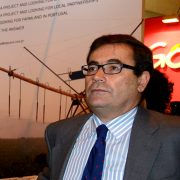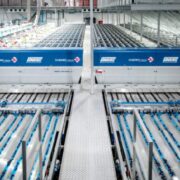TPP: the most ambitious trade agreement in the history
The Trans-Pacific Partnership Agreement (TPP, for its acronym in English) creates a tariff-free zone representing about 40% of world gross domestic product (GDP). The member countries of the treaty are the United States, Japan, Australia, Brunei, Canada, Chile, Malaysia, Mexico, New Zealand, Peru, Singapore and Vietnam. Agricultural quotas have been one of the areas that has cost close from a dozen countries, whose economic fundamentals differ profoundly.
The negotiations for the Trans-Pacific Partnership Agreement is the most ambitious trade agreement ever created, have concluded in Atlanta (USA), to the differences between this country and Japan, and waiting for the complex approval in the parliaments of the twelve signatories.
The last obstacles to these negotiations, initiated in 2008 have referred to market access for dairy products and the new generation of biomedicines. Agricultural quotas, automotive, intellectual property laws and the terms of pharmaceutical patents were some of the areas that has shut consisted of a dozen countries whose economic fundamentals differ profoundly.
The TPP, which has to be ratified by 12 countries, eliminated tariffs on the import of foreign vehicles if at least 45% is produced in the countries of the region and liberalize most agricultural sectors as highly protectionist countries Japan or Canada.
First political reactions
Japanese Minister for Economic and Fiscal Policy, Akira Amari, and the Trade Representative of the United States, Michael Froman, had worked hard to iron out differences between the two largest economies on both sides of the Pacific.
In a statement, US President Barack Obama, said that “this partnership balances the playing field for our farmers, ranchers and manufacturers, to eliminate more than 18,000 tax those countries’ products made in their country.
“The TPP is a strong agreement, with high standards and modern work that reflects our values, environment and human rights. It will strengthen American workers and ensure that our companies can compete on equal terms in some of the most important markets, “summarized the US Commerce secretary, Penny Pritzker.
However, now the TPP must pass the approval of Congress, which after the approval of the “fast track” for processing trade agreements this past spring, may approve or reject but not amend the agreement.
A significant number of Democrats opposed the deal, even though Congress has a majority of Republican opposition, which favors giving the green light to this new free trade area on the shores of the Pacific Ocean.
The Speaker of the House of Representatives, Republican John Boehner, noted that, with the adoption of the “fast track”, increasing presidential authority in negotiating trade agreements, “the American people will have the opportunity to review the Congress agreed and will ensure that it meets the standards.”
Obama has promised that Congress and the American people have “months” to review “every word” of the agreement.
One of the most critical of this agreement, the independent senator and Democratic presidential candidate Bernie Sanders, lamented that “Wall Street and the interests of large corporations” have regained with this agreement he believes that has been negotiated in secret.
Richard Trumka, the president of the largest union in the country, the Federation of Labor and Congress of Industrial Organizations (AFL-CIO), have shown that delays at
the time of closing negotiations with an agreement shows that “seems to have been many concessions problem. We ask the Administration to publish the text of the agreement and immediately ask lawmakers to exercise caution in evaluating the TPP,” he added.
The agreement is seen as a counterweight to the economic dominance of China in the Pacific region. China was invited to be an integral part of the agreement, but rejected by the restrictions in sectors such as finance.
Source: EFE













